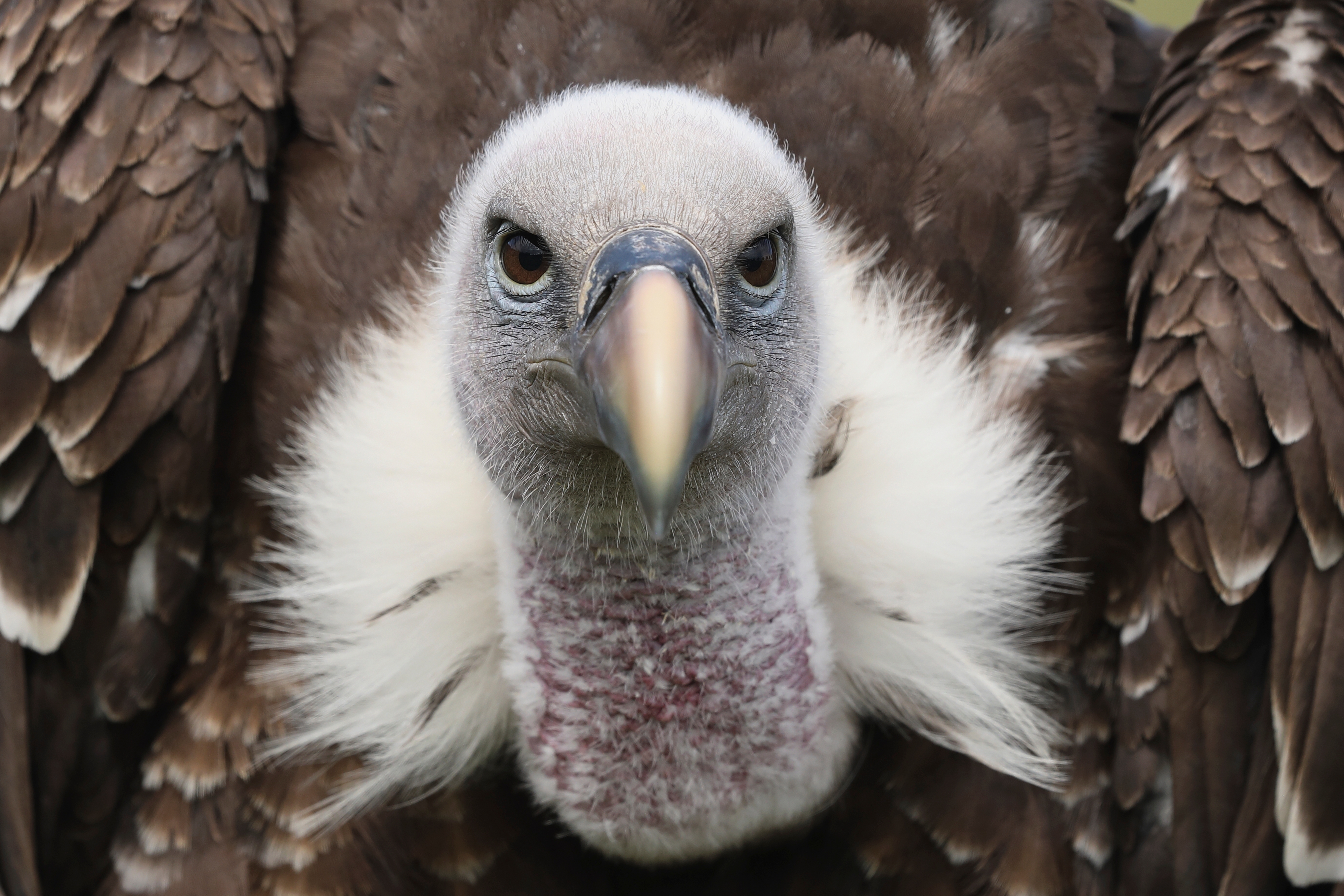There are many impressive things about birds. Some soar for miles without ever flapping their wings; some live for over half a century; and some are literal rainbows. But when you look at a bird gliding high up in the distance, have you ever wondered just how high they can go?
The species that holds the record for the highest flight of any bird is the Rüppell’s vulture (Gyps rueppellii).
In 1973, one Rüppell’s vulture struck a commercial aircraft 11,300 meters (37,000 feet) above Côte d’Ivoire in West Africa. While one of its engines was damaged, the plane managed a successful landing. The bird was unfortunately not so lucky. All that remained of it were five complete and 15 partial feathers – enough for a positive ID of the species, and for this incredible feat to be confirmed, but probably scant comfort to any friends of the deceased.
We jest, but sadly this bird probably did have friends, and maybe even a significant other. They’re very social and are thought to form monogamous pair bonds, with both parents helping to take care of any chicks for the first 150 days of their lives.
Native to a region of Africa called the Sahel, which spans a swathe of land between the Sahara and the Sudanian savanna, the vulture’s home range covers multiple countries including Zimbabwe, Senegal, and Ethiopia. From time to time, they’ve also popped up across the Mediterranean in Spain.
Unfortunately, though, these kinds of visits might become more of a rarity in the future, as the Rüppell’s vulture has been classified by the IUCN Red List as Critically Endangered. Like many similar African birds, they’re threatened by habitat loss, hunting, and decreased availability of their sole food source, carrion.
There’s also a big problem with poisoning, especially in East Africa. This has largely been from a pesticide called carbofuran, but the charity BirdLife International also highlights the role of the drug diclofenac. This anti-inflammatory can be used in veterinary treatment but is fatal to Rüppell’s vultures if they ingest the carcasses of animals that have been dosed with it. Surprising, when you consider that they can happily chow down on meat that’s infested with anthrax and botulism.
If you ever are lucky enough to spot a Rüppell’s vulture in the flesh, it’s a sight you won’t forget in a hurry. These majestic birds reach heights of almost a meter (33-38 inches) and have a distinctive feather-free head – Animalia writes that this adaptation stems from their tendency to stick their whole heads inside their prey while they feast upon it.
Who needs a feathery head when your collar looks this good?
Image credit: RMMPPhotography/Shutterstock.com
Their powerful wings span over 2 meters (7-8 feet), but they use them sparingly in flight. Even when they’re not causing a headache for commercial pilots, Rüppell’s vultures regularly reach impressive altitudes, taking advantage of strong thermals as they soar over the ground and scan for their prey.
It’s quite possible, even likely, that the 1973 event was an anomaly. There are reasons why you don’t generally see birds flying alongside passenger planes at cruising altitude, most of them having to do with oxygen.
Other contenders in the altitude stakes include the common crane (Grus grus), which has been recorded at 10,000 meters (32,800 feet) as it evades eagles in the Himalayas, and the bar-headed goose (Anser indicus), which has been spotted at a maximum height of 7,300 meters (24,000 feet) and has supersized lungs to cope with the lack of oxygen.
Still, BBC Wildlife reports that even with modern tracking technology, we’ve no record of another bird coming close to the Rüppell’s vulture’s record, so its crown looks safe for now.
Source Link: What Is The Highest A Bird Can Fly?
